Neem oil is a highly potent natural fungicide and insecticide for succulents. It is manufactured by pressing the fruits and seeds of the neem tree, which creates a type of vegetable oil.
This oil is so potent that it can exterminate all stages of an insect’s life cycle. It doesn’t only tackle insects and bugs, though; it also assists in eliminating mites and fungal diseases.
But, can you use neem oil on succulents as well?
Sadly neem oil shouldn’t be used on succulents with thinner leaves. It can suffocate and damage the leaves as a result. But, you can use it on other types of succulents.
Let’s dive a little deeper into what to use it on, how to use it, and some common mistakes when applying it.
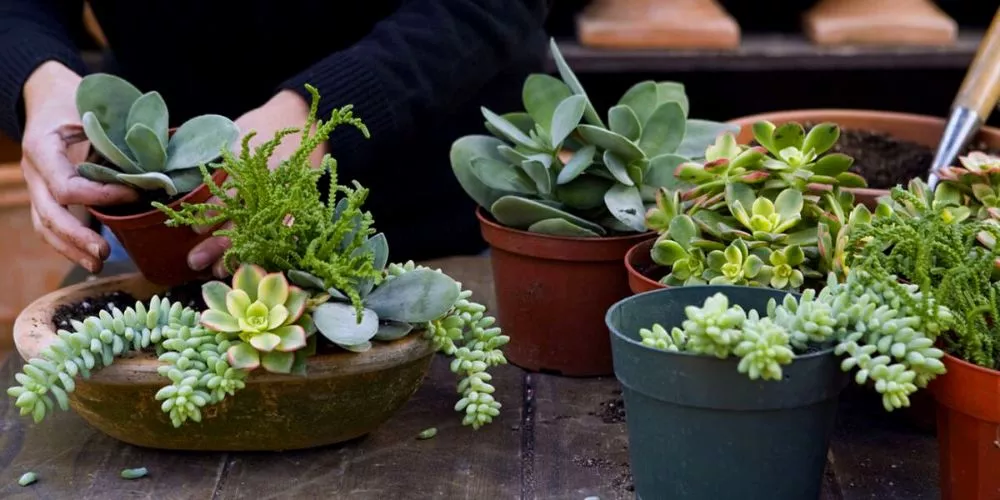
Table of Contents
Can you use neem oil on succulents?
Neem oil can be used on succulents, but not all of them. It is recommended that you avoid using neem oil on succulents with wispy leaves as it can burn them.
Succulents, in general, are known to have more plump, moisture-filled leaves, so they are usually quite tolerant to neem oil.
However, some species such as Aichryson Laxum, Aichryson Laxum and Beaucarnea Recurvata are more sensitive to this type of treatment.
Can you spray cactus with neem oil?
Neem oil is an excellent choice of pesticide and fungicide for cactus plants.
However, it isn’t a one-shot kill type of treatment. You must use it regularly to stay on top of any pest or fungal issues.
It’s best to use neem oil in the warmer months to keep your succulents and cacti as dry as possible during the winter.
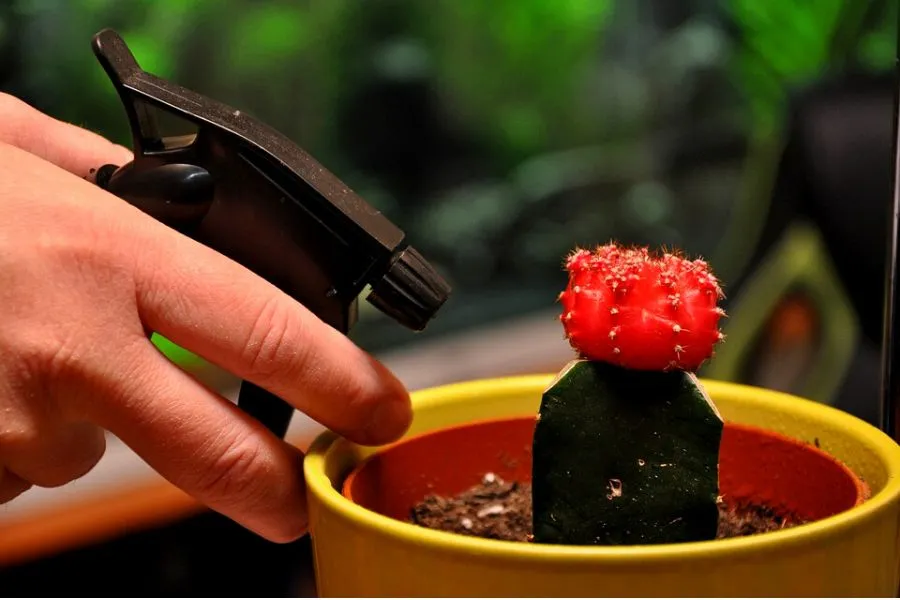
Cacti have heaps of tiny rigid crevices, making it easy for the neem oil to seep into the soil. If the ground gets too wet during winter via any moisture, the plants can suffer from various problems, such as root rot.
How do you use neem oil for succulents and cacti?
Firstly, the way neem oil works are by interfering with the hormones of an insect. This makes it almost impossible for them to lay and nurture their eggs.
The pungent stench of the oil can also hinder the ability to feed these insects. The best time to start using neem oil is in the springtime. This is when they begin to require water which attracts various bugs.

Additionally, the fungal disease can start to cause problems in soils that can be moist. There is 3 standard yet simple methods to apply neem oil to your succulents and cactus.
Before you do, though, you’ll need to purchase or make your solution. Here’s a straightforward recipe for homemade neem oil.
What you will need
- Some good quality 100% Neem Oil (cold pressed and unfiltered is best).
- A spray bottle with an adjustable nozzle (500ml / 16oz).
- Warm water (450ml).
- Dish soap.
Putting it all together
- Fill the spray bottle with 450 ml of warm water.
- Add ½ tsp of Neem oil to the water.
- Add 3-4 drops of dish soap to the water/neem oil solution.
- Put the spray bottle lid on and shake the solution.
- Make sure you shake it each time you use it, as the oil and water will separate after a short time standing still.
*Note – If you don’t want to spray the solution and prefer to wipe it on instead, you can store it in an airtight jar. This will keep it fresher for longer as opposed to keeping it in the spray bottle.
3 Simple ways to apply neem oil to your succulents and cactus
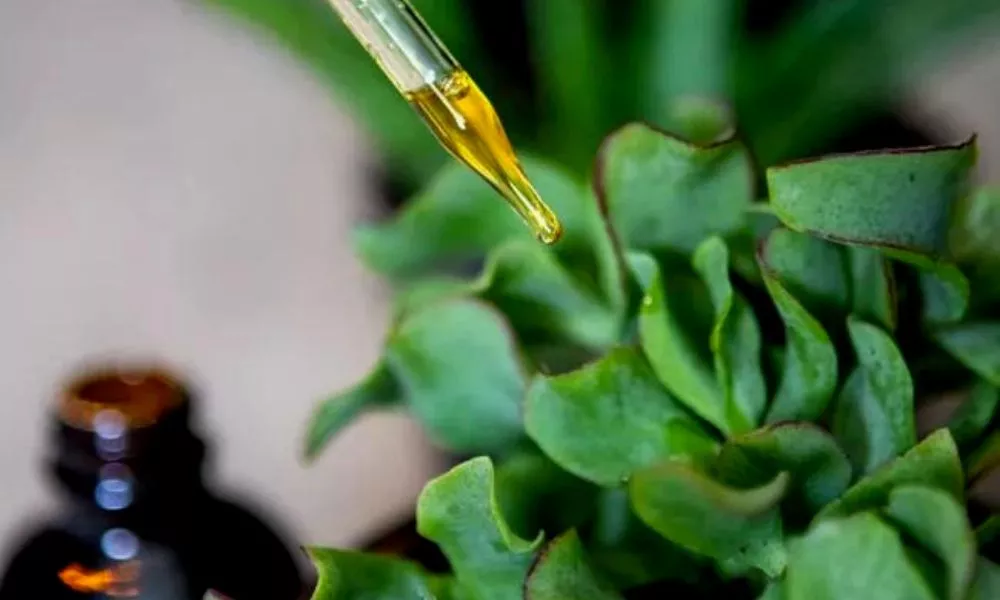
- Spray it on the leaves – The fastest and easiest way is to use a spray bottle to mist your plants. The only issue with misting is that it’s challenging to apply it to every nook and cranny of the plant. Meaning you may miss some spots.
- Hand wipe – The most effective method is to use the solution you created earlier and wipe the plant. Simply take a microfiber cloth or cotton ball and almost hand wash/wipe every part of the plant until you are satisfied that you didn’t miss anything. This method will take much more time but ultimately do a more thorough job.
- Q Tip removal – Much like hand wiping, you can take a Q-tip and remove any species of insect or bug that you can see. This method can be more precise than the others. Although wiping the plant is more of a mitigation method.
What happens if you use too much neem oil on plants?
Although neem oil is an excellent natural fungicide and insecticide, it’s not recommended that you go wild and crazy when using it.
Consequently, using too much of the stuff can cause severe damage to your plants. Being an oil, once the neem starts to heat up, it can burn the foliage of your plants, especially on warmer, sunnier days.
If this is the case, you may begin to notice streaks, splotches and dots as the affected leaves start to decay. One of the worst things you do is thoroughly coat/cover your plant with neem oil on a hot day. The plant will almost die instantly as the neem starts to burn the leaves.
The damage in multiple areas of the plant will put it into shock and disallow it to recover. It is not recommended to spray neem oil on your plants when temperatures are above 90°F (32°C).
If you have done so by accident, try to get your plants into some shade to recover until the night falls and it becomes more relaxed.
Do you spray neem oil on soil or leaves?
Neem oil can be used in several ways. It can be misted/sprayed on, wiped all over the plant or even applied only on pest-affected areas.
You can drench the whole plant in neem oil, including the soil. Try to keep an eye on the moisture content of the earth, though. It’s ok to get it wet but not flood it out.
Flooding of the soil will cause root rot. If you have managed to spill quite a bit of the neem oil solution into the ground, you can either report your plant or keep an eye on it over the next few days to ensure it slowly drains out.
Once the soil becomes dry again, you’re good to use the neem oil to add another application.
Mistakes to Avoid While Applying Neem Oil On Succulents
A few minor issues can arise when using neem oil on succulents.
Here’s a list to help you avoid making the same mistakes we’ve seen many times before.
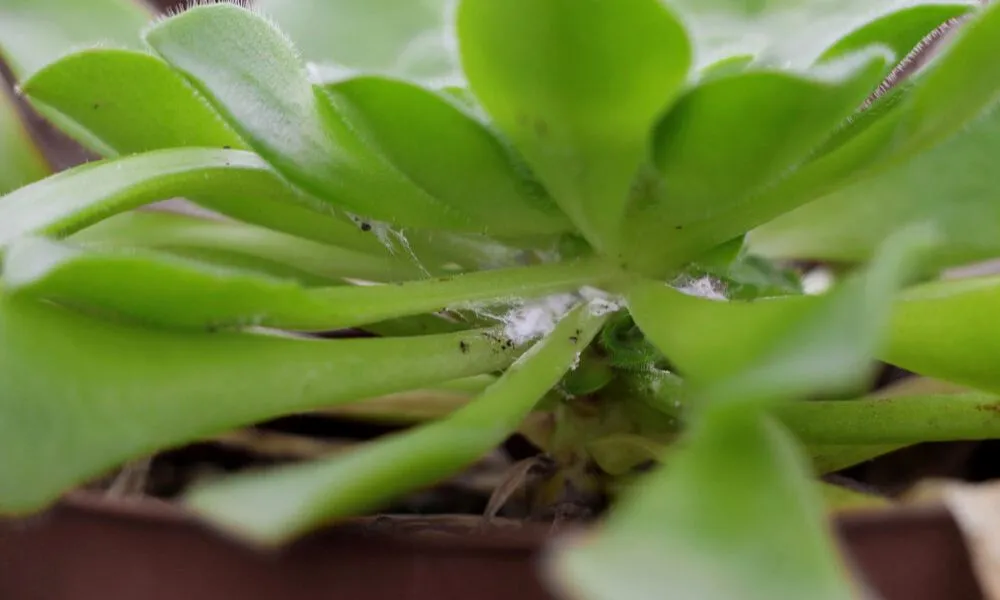
- AVOID mixing Neem oil with other types of pesticide and fungicide solutions. You don’t know what will happen when they combine, and it’s not worth testing it yourself. The new concoction can even become more harmful to your plants.
- AVOID spraying your plants in extreme heat and/or full sun. In severe cases, the leaves can suffer from burning can, killing them almost instantly. Neem oil breaks down and loses its potency when exposed to UV rays.
- AVOID using neem oil in its raw form, especially on wispy-leaved, sensitive plants. It contains Azadirachtin in an amount that can damage plants by burning them. Always dilute it using warm water and dish soap.
- AVOID using store-bought pre-mix sprays on your succulents. They may look great on their packaging, but you don’t know what you’re spraying on your plants. Not only that, but they are generally not as good quality as a homemade 100% pure neem oil solution. There’s a straightforward recipe, only a few subheadings further up in this article!
- ALWAYS and we mean, ALWAYS, test the neem oil on a tiny patch of your succulent before proceeding with a complete application. Wait at least 24 hours to see if the plant has reacted negatively. If so, neem oil may not be a good idea and may be worth exploring other options. Some plants can be oversensitive and even allergic to specific solutions.
Tips for Preventing Pests on Succulents
Neem oil is an excellent choice in helping to mitigate the potential attacking and spawning of insects and other pests.
You can use different methods to prevent the problems from getting near and/or gaining access to your succulents. Let’s look at some of those methods in a little more detail.
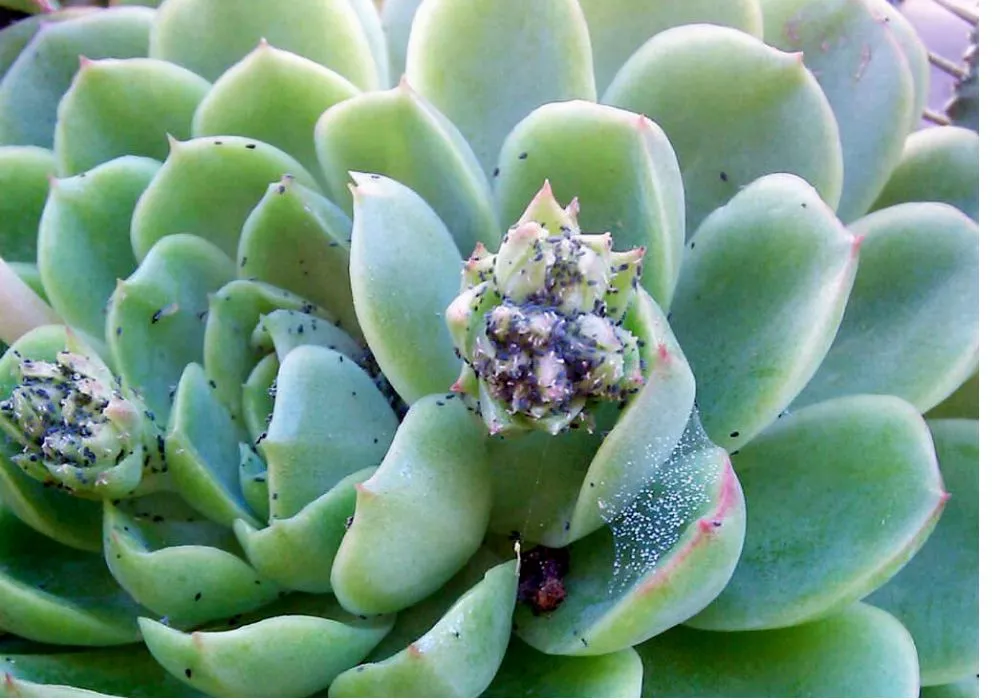
- Maintain Dry Soil – Try to keep the soil of your succulents dry as much as possible. When it becomes wet and soggy, it becomes a breeding ground for intruding pests such as mealy bugs, gnats, etc.
- Maintain Plant Health – Use mild, well-balanced fertilizers on your succulents during their seasons of growth. This will keep them strong and healthy, which helps ward off pests and minimize the risk of any fungal disease. Apply during the springtime for optimal effect.
- Dispose of it Correctly – If you remove any dead leaves or foliage as part of a recovery or general maintenance, make sure you dispose of them correctly. Keeping the affected limbs/parts clear of healthy plants will reduce the risk of the disease or pest latching and setting up base there. This applies to composting also. You don’t want to throw dead, rotten, affected leaves into your compost and then use the compost on healthy plants later. It’s a recipe for disaster.
- Remove decaying parts – Remove any decaying or dead leaves and/or foliage. These parts are a great cubby house for settling insects and bugs. Removing them won’t give them anywhere to head and breed.
- If all else fails – Use a natural insecticide/fungicide such as neem oil to systematically keep any of these menaces away from your succulents. Performing regular sweeps will ensure they have no chance to land, let alone respawn on your succulents.
Frequently Asked Questions (fAQs)
What is the best fungicide for succulents?
The best fungicides for succulents are those that are natural. Neem oil is a solid choice, but you must make sure you make the solution using some good quality 100% Neem Oil (cold pressed and unfiltered is best). Otherwise, you risk burning the leaves when undiluted. Alternatively, creating a solution of water, baking soda, and dish soap is another simple but effective homemade blend.
Does neem oil clog plant pores?
Neem oil should be applied routinely. Using too much neem oil for an extended period can coat the leaves of your succulents with a layer of fat. This layer can suffocate the plant by clogging its pores. If this occurs, it’s a good idea to rinse the affected plant and let it dry out before reapplying.
How often should you spray neem oil on plants?
This depends on the species and size of your plant. Generally, it is safe to spray neem oil on your plants at 1-3 week intervals. However, if your plant starts to burn, ease up on the spare until it heals and reapplies.
Should I wash neem oil off plants?
Neem oil usually dries up in just a few hours, but it takes 2-5 days for the plant to be completely free of the oil. In saying that, though, if you want to harvest something such as fruit or herb from the plant, you can rinse them off with soapy water and allow them to dry. Otherwise, you shouldn’t need to wash it off at all.
How quickly does neem oil work?
Neem oil usually takes 3-4 days to start showing its effect. It will also depend on the species and size of the plant to which it is applied. Bigger plants may require more neem oil to see results at the same rate as smaller ones.
Conclusion
Neem oil is one of the best choices regarding natural pesticides and fungicides. It’s fast and straightforward to make your solution that can last a decent while.
But while using neem oil on succulents we need to be a little more careful. It can’t be used on all types of succulents for that matter.
However, you can apply it in several ways that can see varying results. Of course, regular maintenance is required if you start to see a breakout of pests or fungal disease.
We hope that this article has been helpful, and we look forward to creating more like this that are tailored to your needs.


